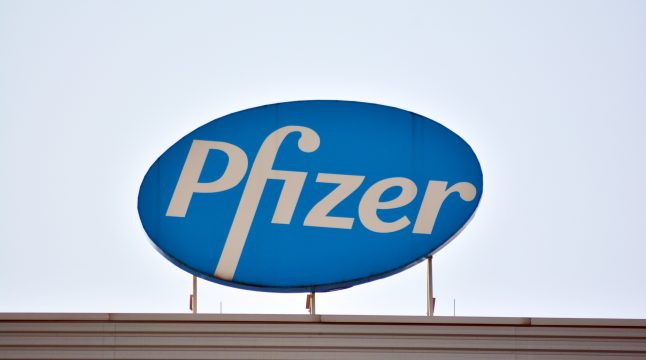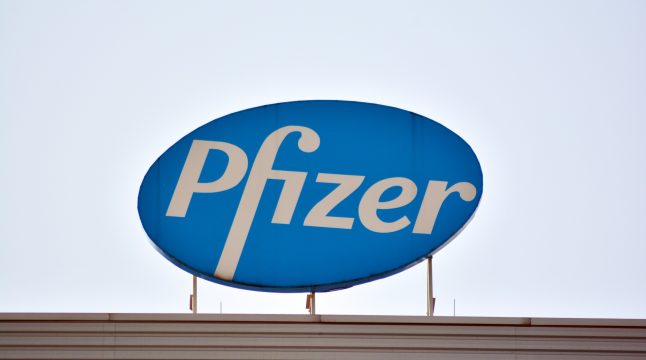
 Image courtesy of 123rf.com
Image courtesy of 123rf.com
After the Iran-Israel situation fizzled out for the time being, the Cboe Volatility Index (VIX) dropped from its yearly high of 19.23 to 16.36. Although lowered, US stock volatility remained above the months, leading to a refreshed Middle East conflagration.Understandably, as the wider Iran-Israel conflict would lead to regional and global disruptions in February, the Institute of International Finance (IIF) projected it could trigger a 0.4% global growth drop. That is notwithstanding the potential severe disruption of oil supply through the Strait of Hormuz chokepoint, which accounts for 21% of global oil consumption.Investors should shore up their portfolios with wide-moat, defensive stocks in volatile times like these. If such disruptions occur, defensive stocks could offset rapid oil price surges, resulting in inflationary pressure.
Anheuser-Busch InBew (Nasdaq: BUD) – ADR
It may seem that this beer company is embattled following the marketing mishap. Yet, over one year, BUD stock is only down 9.3%. For comparison, Tesla (NASDAQ: TSLA) is down 12% in the same period despite Elon Musk presiding over Twitter.More importantly, Anheuser-Busch is the world’s powerhouse of breweries. With hundreds of brands, it can easily weather negative publicity. The company mastered the economy of scale as it continues to absorb smaller breweries.For fiscal year 2023, AB InBev reported a -1.7 % volume drop while increasing revenue per hl by 9.9%. Likewise, the company increased its free cash flow to $8.8 billion, up from $7.2 billion in 2020 and $8.5 billion in 2022.The speculative suppression of BUD stock, now at $59.49, is likely temporary. From its 52-week low point of $51.66, BUD shares are now 13.2% priced higher. Nasdaq’s aggregation of analyst data suggests the average BUD price target at $74.25, while even the low estimate of $68.5 is significantly above the current price level.
British American Tobacco Industries (Nasdaq: BTI) – ADR
Like alcoholic beverages and the previously covered Altria Group (MO), tobacco is another source of wide moat companies. The large 1.3 billion customer tobacco base is still strong and churning recurrent revenue streams.Moreover, tobacco companies are successfully transitioning to smokeless products to overcome policy hurdles. Alongside iconic combustible brands such as Camel and Newport, BAT introduced Grizzly, Camel Snus, Vuse, and Vype as vapor products. For fiscal year 2023, delivered in March, BAT reported 3.1% greater YoY revenue, at £27.5 billion, while increasing smokeless revenue by 16.5%. As a wide moat company, BAT continues to increase free cash flows, at £8.4 billion in 2023 vs £8 billion in 2022 and £7.3 billion in 2020.By 2035, BAT plans to have 50% of revenue coming out of the smokeless market, purportedly already two years ahead of schedule. Just like Altria, BTI is a generous dividend stock, presently having a 10.11% dividend yield at $2.97 annual payout per share applicable to ADR ADR in the US.Year-to-date, BTI shares are up 1%. At $29.41, BTI stock is now just 3.9% over its 52-week low point of $28.25. Per Wall Street Journal’s data, the average BTI price is $39.43 per share. The low estimate is $35.50, above the present price level.
Pfizer (Nasdaq: PFE)
A regular coverage visitor, Pfizer is to drugs what AB InBev is to beer. Notwithstanding the controversial vaccine rollout, the global pharmaceutical is likely to avoid severe repercussions given the wide nature of the project. After this period’s deflation, investors are more confident in PFE’s proper pricing, which is still considered undervalued.Following the $43 billion Seagen acquisition for cancer treatment, Pfizer aligned its 2024 outlook at 8% – 10% operational revenue growth without accounting for revenue from Comirnaty and Paxlovid. The total revenue for the full year 2024 is expected to be in the $58.5 billion to $61.5 billion range.As is expected of pharma stocks, their highs and lows rely on drug launches and FDA approvals. Pfizer has a fertile pipeline across all major medical fields. These range from Abrysvo bivalent vaccine for infants infected with respiratory syncytial virus (RSV) to GBT601 for sickle cell disease, Elrexfio for myeloma, Xtandi for prostate cancer, and Danuglipron for obesity, to name a few.PFE stock is down 9% YTD, trading currently at $26.26 per share. This is just 3.9% above the 52-week low of $25.23. Expecting multiple drugs to hit the market in 2024 and 2025, the average PFE price target is $31.57, with a low estimate of $27, also above the present price level.Investors should also note that PFE is a solid dividend stock, with a 6.4% dividend yield and a $1.68 annual payout per share. More By This Author:Tesla Stock Sees Slight Gains As Market Awaits Q1 Results
UPS’s Q1 2024 Earnings: $1.41 EPS Beats Expectations, Revenue Miss
3 Smaller Tech Stocks To Buy As Focus Shifts From Megacaps















